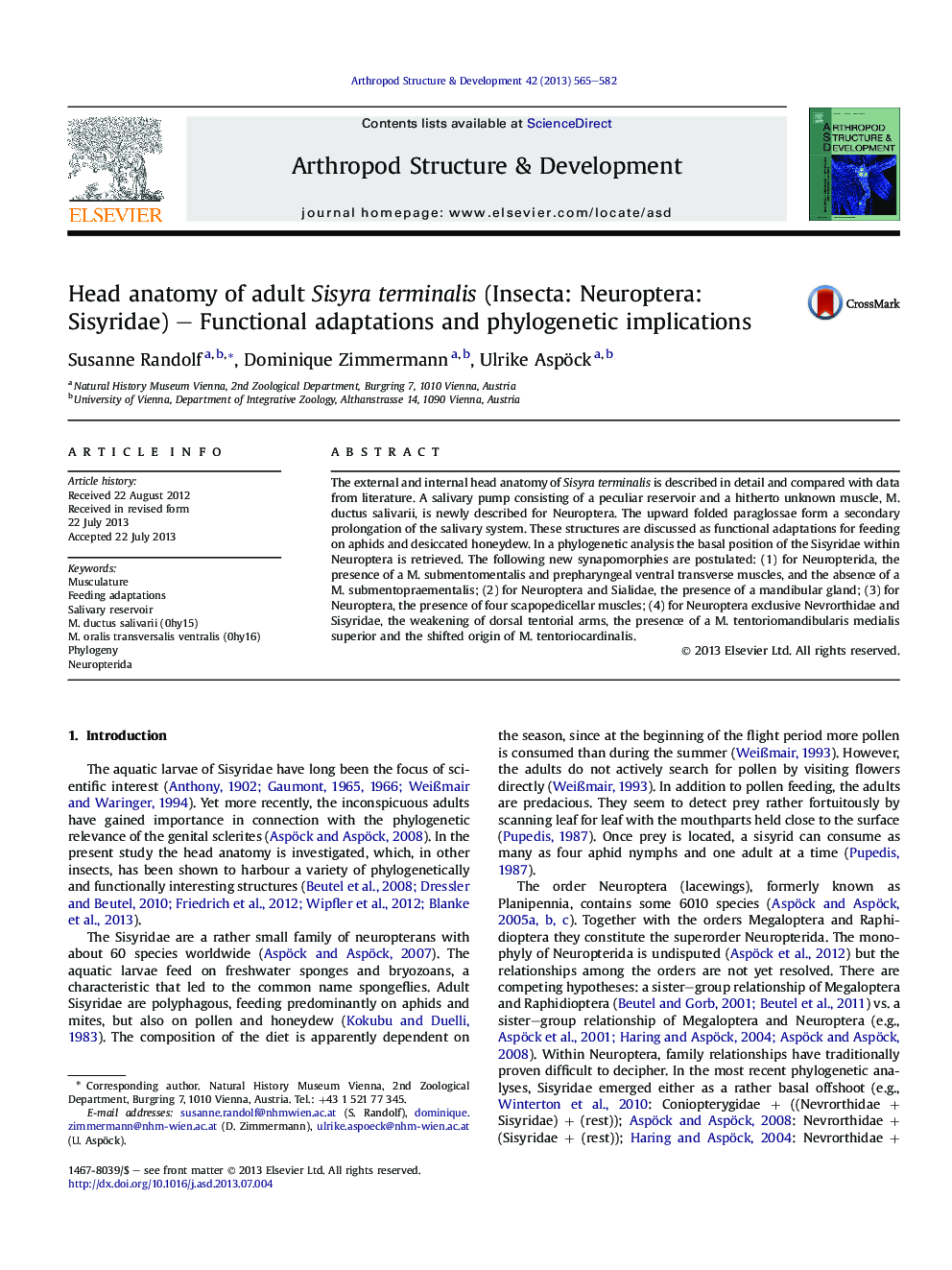| Article ID | Journal | Published Year | Pages | File Type |
|---|---|---|---|---|
| 2778556 | Arthropod Structure & Development | 2013 | 18 Pages |
•A salivary pump consisting of a reservoir and two muscles is described.•The salivary pump is an adaptation to feeding on aphids.•Paraglossae and ligula form a secondary prolongation of the salivary system.•This prolongation is an adaptation to feeding on desiccated honeydew.•Three new synapomorphies for Neuropterida and one for Neuroptera are recognized.
The external and internal head anatomy of Sisyra terminalis is described in detail and compared with data from literature. A salivary pump consisting of a peculiar reservoir and a hitherto unknown muscle, M. ductus salivarii, is newly described for Neuroptera. The upward folded paraglossae form a secondary prolongation of the salivary system. These structures are discussed as functional adaptations for feeding on aphids and desiccated honeydew. In a phylogenetic analysis the basal position of the Sisyridae within Neuroptera is retrieved. The following new synapomorphies are postulated: (1) for Neuropterida, the presence of a M. submentomentalis and prepharyngeal ventral transverse muscles, and the absence of a M. submentopraementalis; (2) for Neuroptera and Sialidae, the presence of a mandibular gland; (3) for Neuroptera, the presence of four scapopedicellar muscles; (4) for Neuroptera exclusive Nevrorthidae and Sisyridae, the weakening of dorsal tentorial arms, the presence of a M. tentoriomandibularis medialis superior and the shifted origin of M. tentoriocardinalis.
